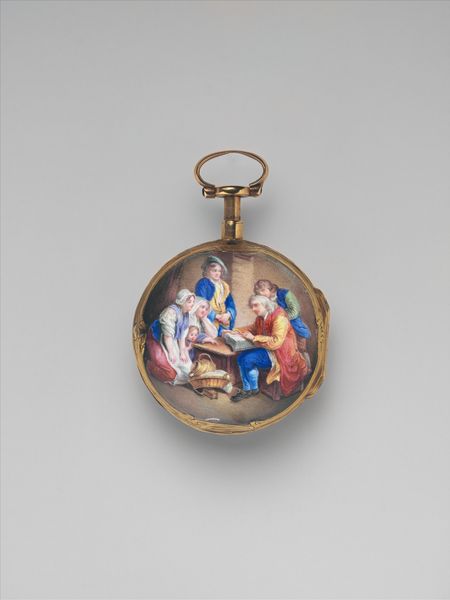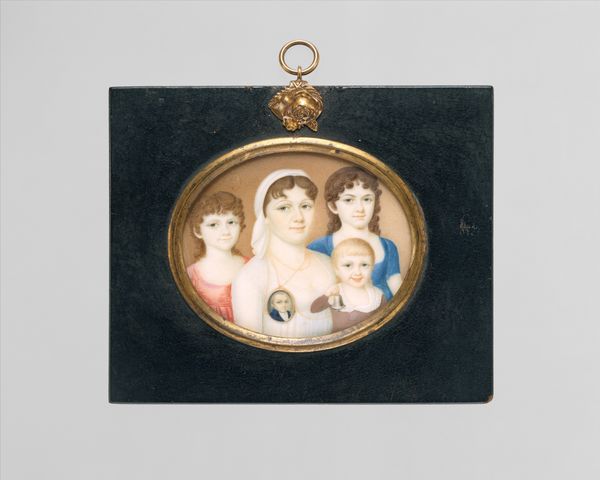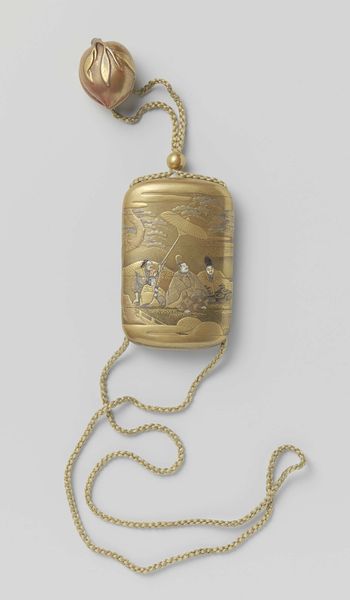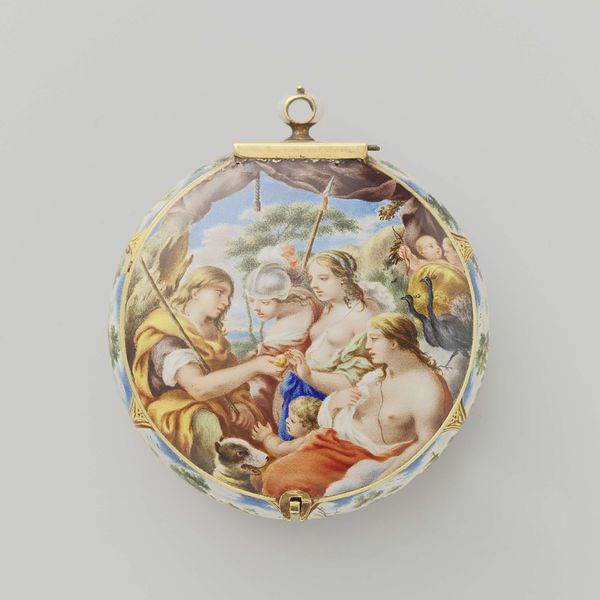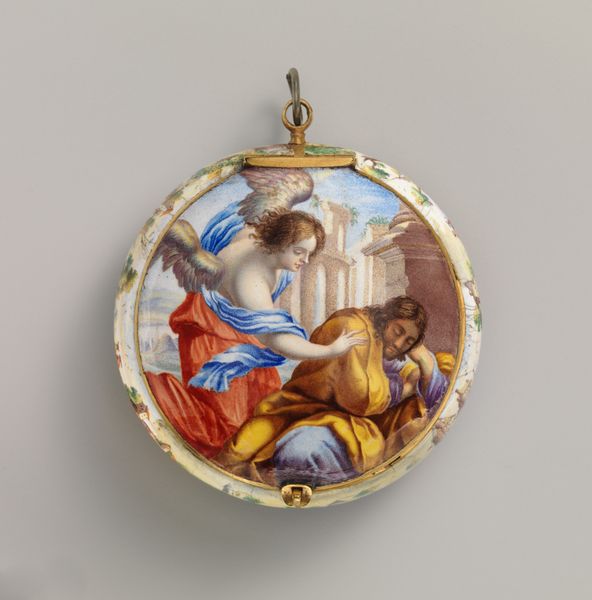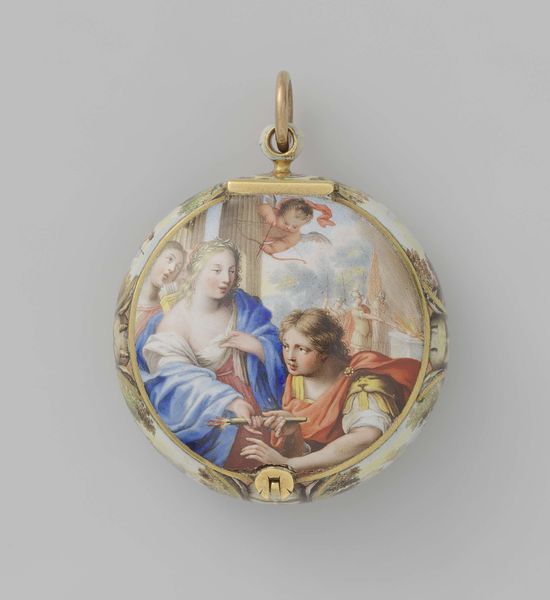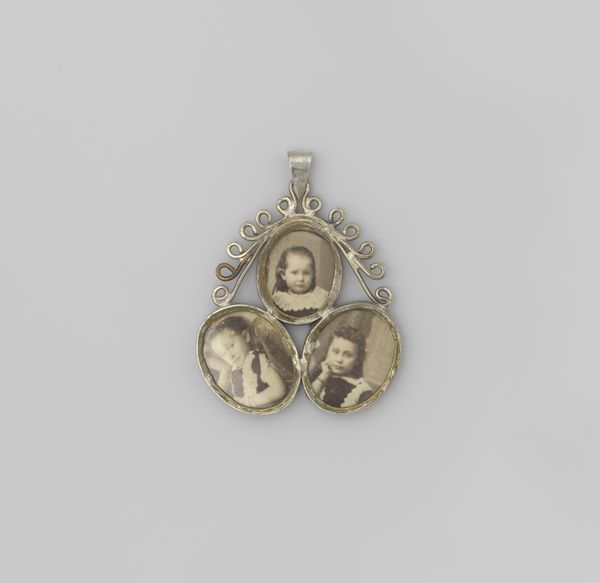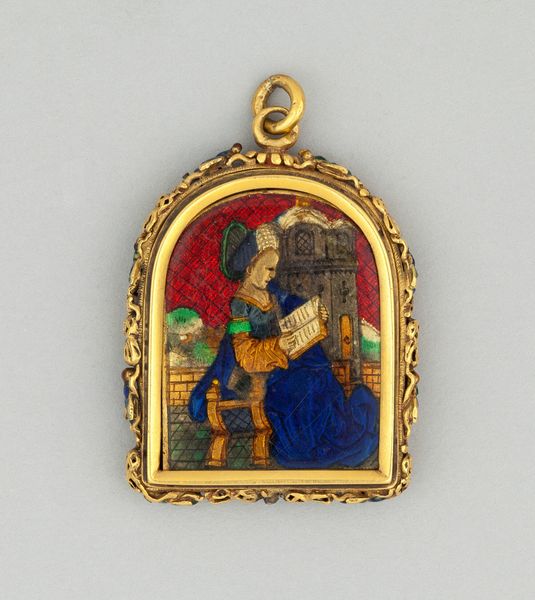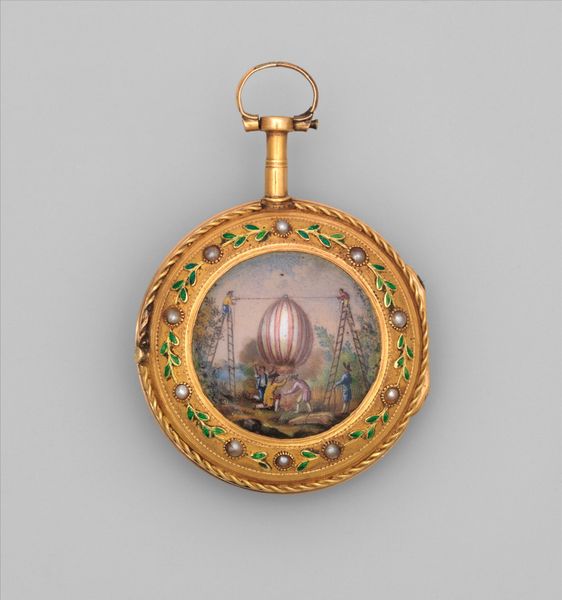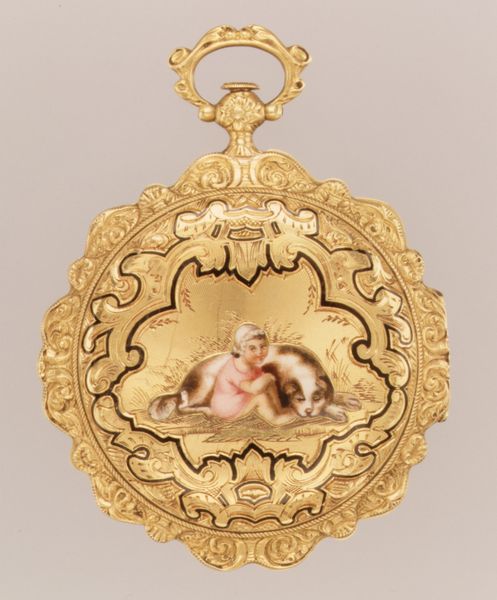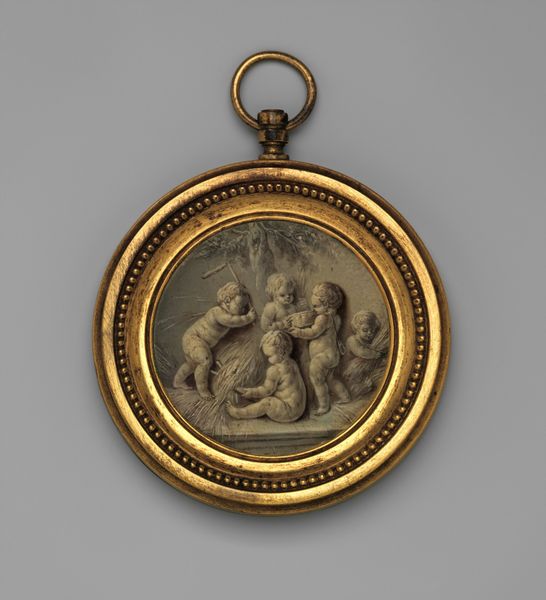
painting, enamel
#
portrait
#
allegory
#
painting
#
enamel
#
genre-painting
#
miniature
#
rococo
Copyright: Rijks Museum: Open Domain
Curator: Welcome. Before us, we have a quite delightful piece. It's a watch, dating from around 1760 to 1770, created by Jean Antoine Lépine. The watch face features an enamel painting titled "Watch with an Allegory of Motherhood". Editor: My immediate impression is that this scene seems quite idyllic. It has soft colors. The scene almost conveys a sense of protected domesticity. Curator: Precisely. It's quintessential Rococo. We can observe how the domestic sphere, motherhood, and idealized family life become fashionable and valuable motifs. Think about how the philosophers, such as Rousseau, elevated motherhood in their writings and the parallel explosion of genre painting depicting tender scenes like this one. The public role of art definitely influences how artistry plays a part in this private expression. Editor: Absolutely, and that's the tension here. Is it truly about elevating women, or does it box them into these sentimental roles? I wonder about the labour behind this seemingly effortless scene. Someone's always cleaning and caring for them. It speaks to larger structural issues where visibility and agency don't necessarily coincide. It all appears so fragile, both in scale and subject. It's as if this perfect image can shatter easily. Curator: Very insightful. These miniature enamel paintings, often incorporated into precious objects, functioned as status symbols for the upper classes. A piece like this underscores a whole societal structure based on idealized imagery and also luxury. Owning something like this indicates that one has the resources to display affection. Editor: Yes, and how affection became a commodity. These representations contribute to very defined gender roles. It's no accident that even an accessory can become a powerful cultural text. As for how effective these "morals" and gender representations play, can this be something genuine that promotes such moral compass for women. It brings into mind philosophical questions from the Enlightenment where they can intersect into modern philosophical criticism that further reveals art. Curator: So true, the painting and object can spark important dialogues on luxury and social standards and these family roles that people had during the Rococo Era. The object’s scale doesn't limit the art from bringing historical, gender and social issues into our own Era’s art. Editor: In conclusion, "Watch with an Allegory of Motherhood" encapsulates the visual refinement and nuanced politics, still relevant, of an era through an intimate scene painted onto the surface of a pocket watch.
Comments
No comments
Be the first to comment and join the conversation on the ultimate creative platform.
